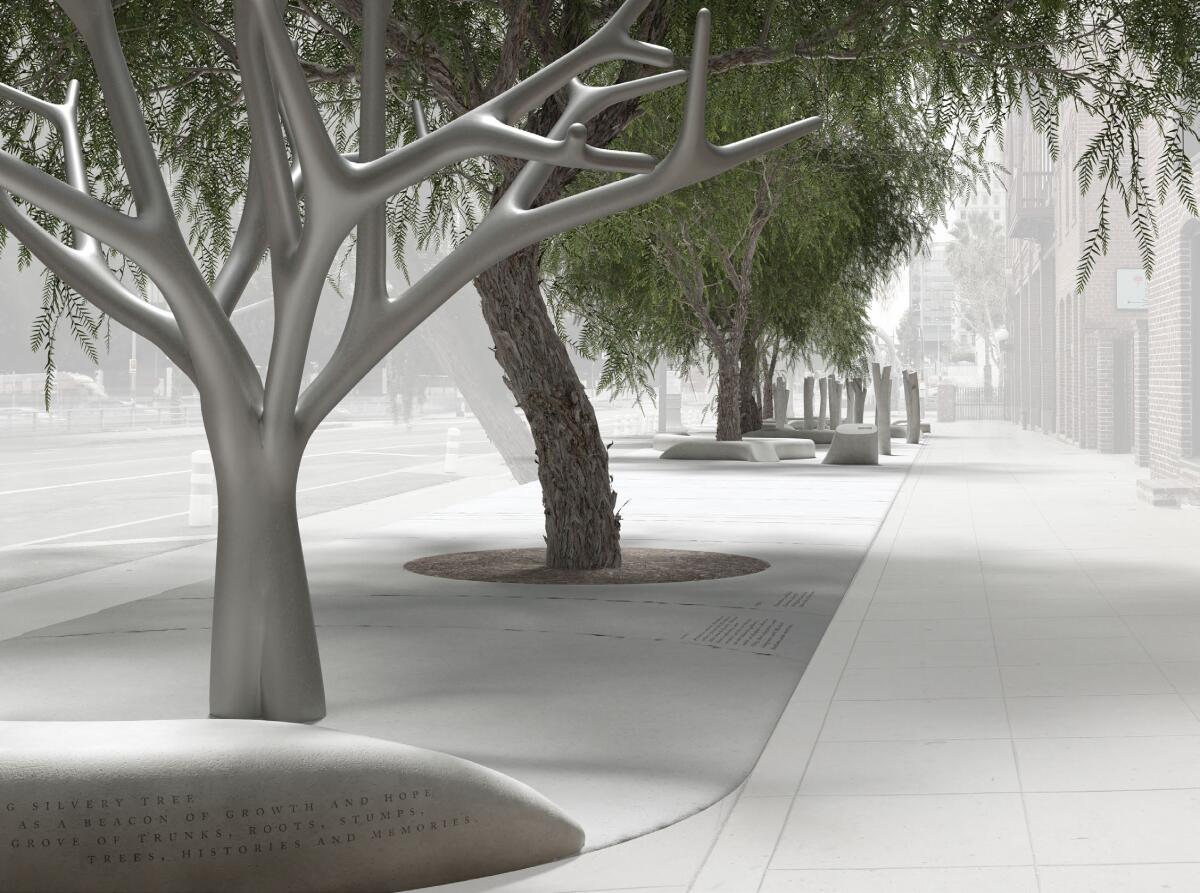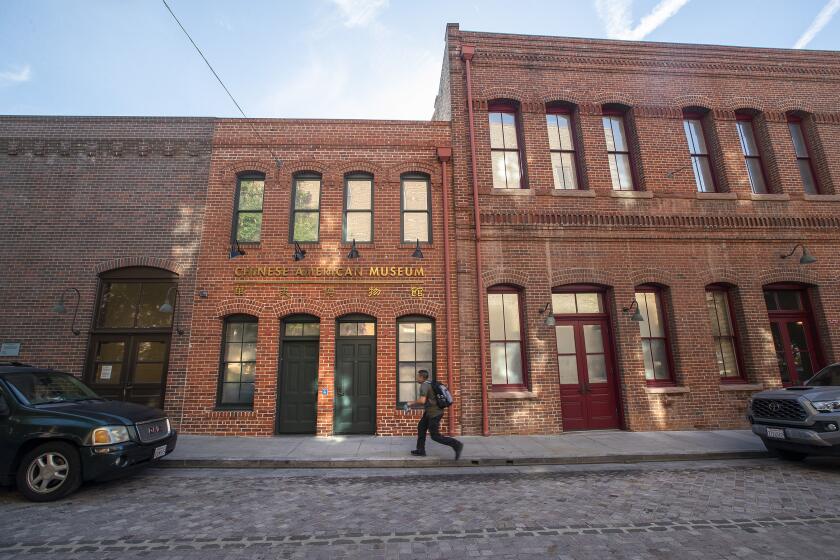Design team chosen for memorial to victims of L.A.’s Chinese Massacre of 1871

- Share via
It remains one of the most shameful episodes in Los Angeles history: In 1871, an angry mob lynched 18 Chinese men following a dispute — at a time when the city’s total population was barely 5,700. Now a monument will be built in downtown to honor the victims of this massacre. On Thursday, the city’s Department of Cultural Affairs and the El Pueblo de Los Angeles Historical Monument announced the winning design for the project: a grove of ghostly trees, stumps and benches dotting the various sites where the events took place, conceived by artist Sze Tsung Nicolás Leong and writer Judy Chui-Hua Chung.
The concept was inspired by the banyan trees that guard the entrance to many villages in Guangdong, where many early Chinese immigrants to Los Angeles originated. Except these trees will not be living. Instead, they will be fabricated in a petrified state. (Details related to materials haven’t yet been worked out, but imagine a grove of trees made out of polished cast concrete.)
Under the plan, most of the monument’s elements would be installed along Los Angeles Street, in front of the Chinese American Museum and near the Plaza de Los Angeles, which marked the core site of the violence. But pieces will also mark other points of significance, including a location at Broadway and 7th Street, where a judge hid men and women fleeing the violence, as well as at Union Station, the site of L.A.’s old Chinatown (which was razed to make way for the train).

Two reports — by the city of L.A. and Monument Lab — reveal blind spots in how California marks its history. A memorial to the Chinese Massacre sets a new agenda.
“While we are memorializing a massacre that reveals the long history of anti-Asian violence,” said the artists in a statement, “we are also acknowledging that Asian Americans have been deeply rooted here since the beginnings of this city, state and country.”
The design, states Felicia Filer, public art division director at DCA, “strikes the proper balance between honoring and remembering as well as poetically educates the public about this painful event in our city.”
The selection marks the culmination of a lengthy process, begun in the fall of 2021 by the 1871 Steering Committee, a group of civic and cultural leaders that collaborated with the city’s Civic Memory Working Group. At that time, a request for ideas was issued; in January, those ideas were whittled down to six finalists who were each given $15,000 to develop their concepts. Leong and Chung’s design was chosen from among the six.
The process was designed to avoid the top-down methods by which many monuments are installed: Often, a civic group donates a statue to the city, or the city chooses a site and requests proposals. In this case, however, the committee launched a broad public process that included community meetings and allowed design teams to propose a site or sites for the memorial.
Monuments that draw from Chinese aesthetics and spiritual beliefs are among ideas being proposed. A public presentation will take place in February.
Among the evaluation panel’s members were architects Annie Chu and Mark Lee; Steven Wong, director of the Vincent Price Art Museum; rapper and activist Jason Chu; and the city’s former chief design officer Christopher Hawthorne (once The Times’ architecture critic and now a professor at Yale University), who helped launch the process.
The monument, ultimately, will serve to tell the story of a brutal historical chapter that remains largely unmarked in the city’s monument landscape. “There are few things more important than knowing our full history,” said Mayor Karen Bass in a statement, “including, and maybe especially, when that history involves violent injustice, hidden out of sight.”
More to Read
The biggest entertainment stories
Get our big stories about Hollywood, film, television, music, arts, culture and more right in your inbox as soon as they publish.
You may occasionally receive promotional content from the Los Angeles Times.












